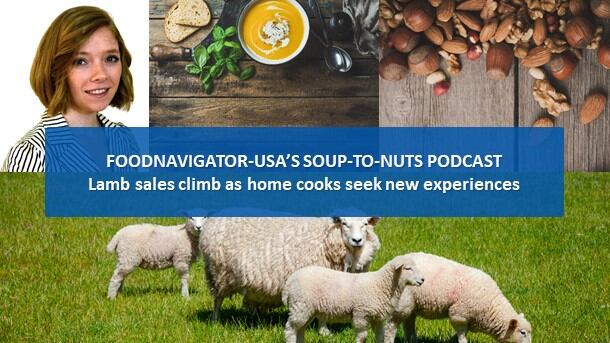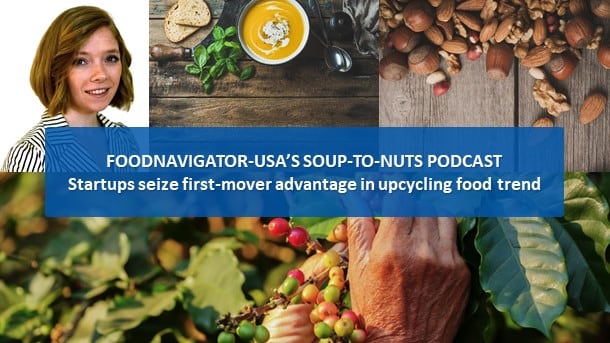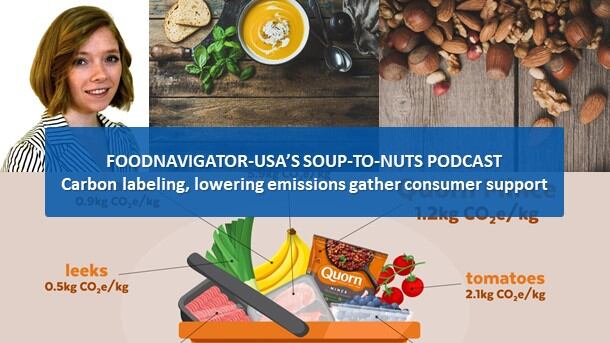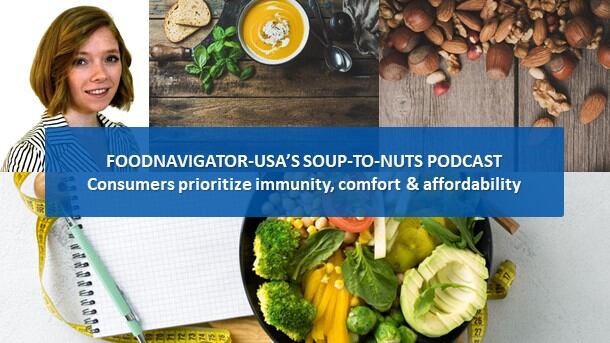According to IRI, growth of lamb sales as measured by a percentage change versus 2019 outpaced all other proteins consistently from May through November of 2020. In addition, lamb had the highest percentage gains at 34% versus the same month the prior year.
In this episode of FoodNavigator-USA’s Soup-To-Nuts podcast, sustainable American lamb purveyor Superior Farms’ VP of marketing and brand strategy Anders Hemphill, and director of marketing Robert Mariano, share what is behind lamb’s quick rise in popularity, who is buying lamb and why, and what 2021 might hold for the segment. They also discuss common misconceptions around lamb and some of the lingering challenges industry needs to address to build further on lamb’s current momentum.
Experience seekers sample lamb
While historically lamb in the US has been reserved for holidays or enjoyed while eating out, the pandemic created a mass “trial” moment at retail for the protein, which Hemphill says to his surprise and delight helped win over consumers who are now embracing the ingredient as an “experience” or way to mix up their at cooking as they continue to prepare meal after meal at home.
He explained that restaurants make up half of lamb sales in the US, and “initially there was a big concern that we were never going to be able to make that up,” but he said after a big bump around last Easter, which is typical, “the sales didn’t taper off, and they’ve continued to grow at a significant pace.”
He explained that much of the sales increase comes from people who aren’t eating out as much and are looking to “mix up the routine a little bit to just keep things interesting.”
Even before the pandemic, lamb sales were starting to climb after years of decline, which Hemphill attributes to the rising popularity of cooking shows and which Mariano also attributed to an increasingly diverse American population.
Overcoming hurdles
While lamb sales have grown tremendously in the past year, Hemphill acknowledges it is still a relatively niche protein with a small base and significant challenges that it needs to overcome.
“Today Americans eat about a pound of lamb per capita, and that compares to about 60 pounds of beef, about 50 pounds of pork and almost a hundred pounds of chicken. So, lamb is pretty niche in the US at this point. But, that said, it has grown in the last few years from a per capital consumption in 2011 of 0.6 and now it is over a pound,” he said.
Part of what has held lamb sales back historically has been what Hemphill describes as a significant “intimidation factor” that is compounded by higher price points than many competing proteins – issues that he says industry must address through consumer education and potentially pack and price structure.
To address this, Hemphill said Superior Farms tries to educate consumers on what cuts of lamb are similar to cuts from more familiar animals and provide them with inspiration and guidance on how to prepare it.
Millennials and Gen Z consumers are most receptive and willing to try lamb, as they also are more willing to try foods and recipes from cultures other than those with which they grew up, he added.
An expanding consumer base
Another misperception that Superior Farms is trying to shake is the misperception that lamb is a protein for the affluent, when Hemphill says in reality it offers appeal to a broad spectrum of consumers across socioeconomic classes.
“We provide all the lamb at Walmart stores nationwide, and our business with them was up almost 40% from the year before and it has just continued to outpace expectations at retail,” Hemphill said, explaining “what we are seeing is a more broad consumer base for American lamb than what we might have presumed a few years ago.”
He added: “We’re seeing people that we wouldn’t have stereotypically associated as lamb buyers, buying their lamb at Walmart, but also at Kroger and HEB and a number of other retailers around the country.”
Creating a lasting relationship with consumers
As more consumers become vaccinated against the coronavirus and local economies re-open, including restaurants, schools and workplaces, Hemphill says Superior Farms seeks to maintain consumers gained during the pandemic and further expand its reach through engaging online content.
“Our goals with consumers continues to be to educate and inspire. A lot of what we are attempting to do is continuing to highlight ways that you can make lamb a part of your weeknight experience. A lamb burger instead of a hamburger or shredded lamb shoulder on flatbread on a past sauce. We are helping people to understand that it can be easy, it can be economical and it can be very satisfying,” he said.
To do this, Superior Farms is working with chefs and sharing recipes, cooking tips and cooking demonstrations online.
Mariano adds Superior Farms also is expanding access through an omnichannel approach.
Hemphill notes that Superior Farms also works closely with retailers to drive foot traffic, and educate staff to make recommendations and provide customers information about lamb.
Building a stable, sustainable supply chain
As demand for lamb grows, Hemphill explains that Superior Farms is working closely with its suppliers to sustainably build healthy flocks by providing them with sales and consumer demand data, genomic analysis tools and even specialized probiotics to support lamb health.
Finally, Hemphill predicts that retail sales of lamb will remain stronger than before the pandemic, even as some of the gains shift back towards food service as restaurants reopen, in part because consumers are increasingly interested in adopting more sustainable diets – and lamb often is a more environmentally friendly option than other animal proteins.




